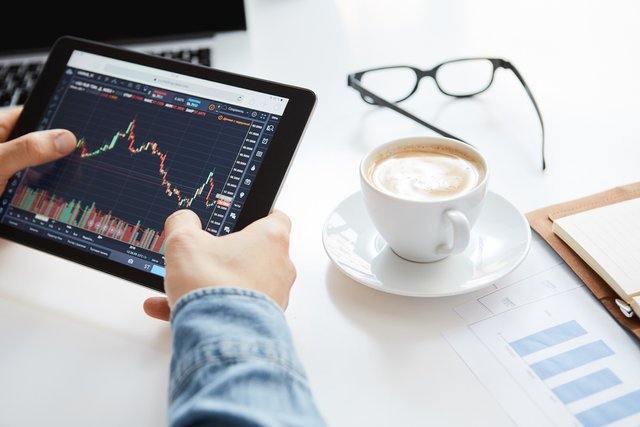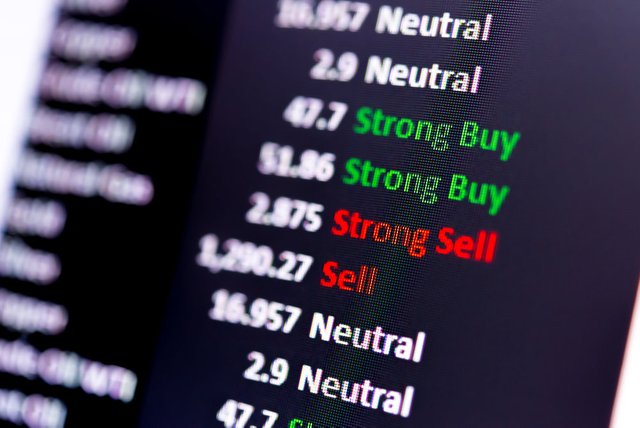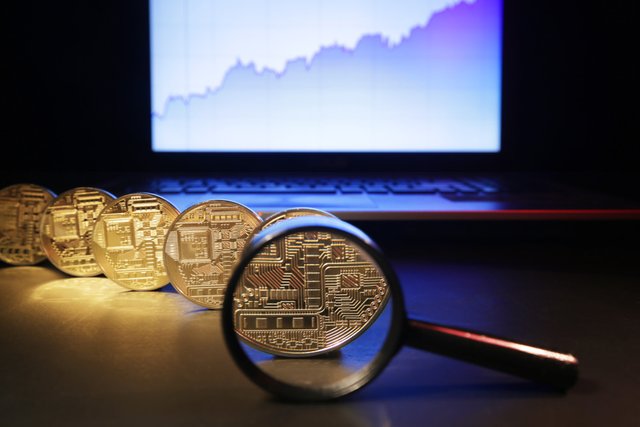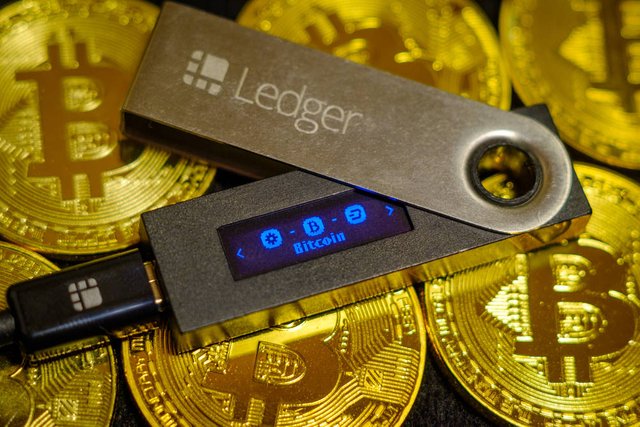How to become a cryptocurrency trader
Trading cryptocurrencies can be highly rewarding but there are also some risks to navigate. For one, cryptos are known for their volatility, so risk management is an important consideration. Then there’s security; you don’t want to wake up one morning to find all your crypto funds have been stolen in the night by hackers.
Remember, cryptocurrencies are not currently regulated and the exchanges and trading platforms are also often unregulated. There is little in the way of consumer protection, so it really is down to you to make all these security or probity judgements yourself.
If you want to begin trading cryptos, at a minimum you’ll need to set up a wallet and sign up to a crypto trading platform or exchange. But if you want to be a successful trader, there’s a bit more to it than that.

Trading digital coins: pic from shutterstock
Strategy
At the onset, it’s important to decide on your broad crypto trading strategy; do you want to invest in cryptocurrencies for the long term or are you thinking more short-term?
Alternatively, you may want to consider trading crypto currencies intra-day as you seek to profit from price volatility during any given trading day.
Some platforms enable you to do the latter via CFDs (Contracts for Difference), so you don’t need to actually own the cryptos to speculate on price moves. You trade CFDs on margin (a form of borrowing that magnifies your risks and returns).
Be warned. Concerns over potential losses from such products and high levels of volatility recently led EU regulators to cut the level of margin that can be offered to retail investors using CFDs to 2:1. At the same time, exemptions to this rule can apply for those deemed to be professional investors.
There are also other derivatives products, such as futures, that enable traders to go long and short on Bitcoin, for example, without actually owning the assets themselves.
Longer-term investors may be content to invest in just a few large-cap digital coins, including the likes of Bitcoin and Ethereum, typically committing their funds for longer than a year.
Those in the middle could decide to take a more active approach, buying and selling on a monthly basis. Investors in this bracket typically trade in mid-cap coins such as Litecoin as well as the usual large-cap cryptos.
Short selling
If you sign up to a trading platform offering derivatives such as CFDs, you can also profit from price falls as well as rises on major cryptos such as Bitcoin. Such a strategy is likely to appeal to those with a more mid/short-term active approach.
In this way, a canny mid-term investor may have been able to profit from the sharp rise in Bitcoin and other cryptos witnessed in December 2017 and January 2018 but also the subsequent sell-off.
Day traders can combine technical and fundamental analysis to profit from both falls and rises in crypto prices. Technical analysis refers to the use of charts and technical signals to guide buy and sell decisions. Fundamental analysis is more to do with understanding the core value of a crypto and being able to interpret news flow.
As well as trading via your laptop, you may also want to consider downloading a trading app to your smartphone. This could enable you to act more quickly, especially useful at times of heightened volatility. Often these apps have alerts to warn you about price moves.

Mobile devices help you stay in control: pic from shutterstock
Controlling risk
Risk management is very much linked to strategy. Adequately controlling your losses from trades that don’t go your way is just as important as ensuring you make a decent amount of profit from your winning trades.
If you’re day trading, and using derivatives such as CFDs, it’s important to have a stop-loss limit in place. That way, when a trade goes against you by a certain level, the trade will be automatically closed out.
You also need to have predefined targets for your profits, so you lock in profits on the winning trades. A take profits order might be the best way forward.
Diversification
Another consideration is diversification. It’s certainly the case that cryptos in general tend to have some positive correlation with each other. However, the performance returns of individual coins do vary. That’s why it makes sense to invest in more than one coin, especially if you’re going long over a reasonable time span.
Theoretically, if you invest in seven different coins as opposed to just one, you should be able to achieve a more optimum risk/return outcome. In other words, your potential returns start to look better given the level of risk you are taking.
Every crypto is different but they do share some traits. As they are positively correlated, and known for their volatility, it’s also worth keeping a proportion of your money invested in other assets. For example, you could have some of your funds invested in a conventional equity or bond fund. You may also choose to keep some of your capital as just cash in US dollars.

Investing in different assets: pic from shutterstock
Asset classes
People talk about Bitcoin as the new gold – a store of value – but why not also consider having a small proportion of your capital allocated to the yellow metal as well?
If you believe in the long-term investment case for a given crypto, you could also invest incrementally over time, for example by buying a certain amount every month. Known in the investment industry as “pound cost averaging”, this technique helps ensure that you don’t buy in at too high a price.
If you’re buying into a coin such as Bitcoin, it’s also worth remembering that you don’t need to buy a whole coin, which currently trades at around $6,830. You can buy fractions of coins – like buying cents instead of a whole dollar or pence instead of a whole pound – so you could invest, say, $300 per month into Bitcoin, rather than putting in thousands of dollars in one go.
Research
There are a large number of cryptos being traded, so it’s important that you can differentiate between them. In general, the more experienced crypto traders tend to be better placed to experiment with the lesser known, smaller-cap cryptos. Those with less experience are more likely to feel comfortable with the larger-cap coins.
Before you invest funds you should always fully understand the given crypto and the narrative behind it. A good way to start is by reading any whitepapers that were created by the team that launched the crypto. That way you should be able to grasp why the coin came into being and its future potential.
You should also scan the web for any news on the given crypto and try to understand what is currently driving the price.

Digital coins under the microscope: pic from shutterstock
Exchanges and trading platforms
Next, you must decide on which exchanges/platforms you will use. As there’s so many of them, and their characteristics may vary quite significantly, this task should not be taken lightly.
Exchanges differ in terms of which cryptos they allow you to trade, and also in the trading tools they offer to help you in your buy and sell decisions.
Some of the larger, centralised exchanges allow you to use fiat currencies to trade in cryptos directly, while mid-tier centralised exchanges may require you to have already purchased coins such as Bitcoin and Ethereum.
Decentralised exchanges and trading platforms, also known as DEX, can offer greater choice, enabling you to trade in smaller cryptos with relative ease. DEX means you trade directly with other users on the blockchain. This is very different to a centralised exchange that facilitates the transactions, with control over an order book and custody of users’ funds.
With decentralised exchanges, you hold the private encryption keys that relate to your digital funds, unlike centralised exchanges that you must trust to keep this information for you on a central server.
As exchanges tend to be prone to cyberattacks, the decentralised approach can therefore improve security. Also, not having a third party in the middle of transactions tends to reduce costs and processing times for users.
However, as you trade peer to peer, DEX platforms facilitate straightforward buying and selling only. This is in contrast to the derivatives products offered by some of the centralised trading platforms that allow you to profit from price falls as well as rises in cryptos without actually having to own the underlying digital coins themselves.
Wallets
Creating a secure wallet is an essential step in crypto trading, with security being a major issue within the industry. These days, investors are typically advised to avoid storing cryptocurrency in wallets held on exchanges.
In January 2018, the users of Japan-based crypto exchange Coincheck suddenly found that their crypto coins had been stolen, literally overnight. Some $400m in digital coins was taken. Given that such vast sums are at play, it’s no wonder that crypto exchanges have been subject to numerous attacks over the years.
But the good news is that it’s fairly straightforward to protect yourself. Software wallets enable you to store you keys on your computer, though the latter are hardly immune to attacks from malware and hackers either.
The most secure option is to store your private keys in paper or hardware wallets, safely offline. For instance, the Ledger Nano S hardware wallet, retailing for around $80, offers secure chip storage. In comparison, online or software wallets are much more vulnerable to attack given the varied and sophisticated techniques used by criminals to steal data.

A Ledger Nano S wallet: pic from shutterstock
Opportunities
The volatility of cryptos continues to provide some excellent opportunities for traders. In theory, the higher the volatility, the easier it becomes to make money from trading, up to a point that is.
Exchanges and trading platforms vary greatly, however, in what they offer. Just as you need to do plenty of research on individual cryptos before taking the plunge, you also need to do some careful due diligence around the platforms themselves.
If possible, try to use them in simulation mode to test your strategy. Fees vary greatly between exchanges, as do the tools they offer to help you make a success of trading. While greater volatility intuitively helps traders, you’ll also notice that the spreads offered by exchanges on the various coins differ.
Spread matters, it’s the difference between the buy and the sell price; the narrower the spread, the easier it becomes for you to make a profit on any given trade.
Always keep security at the forefront of your mind. If you sign up to an exchange, make sure you use as much authentication as possible and opt for a secure, offline wallet to store cryptos.
Finally, don’t bet the farm; stay in control.
Text by James Hester
Originally posted here https://dex.openledger.io/how-to-become-a-cryptocurrency-trader/
Follow OpenLedger on socials